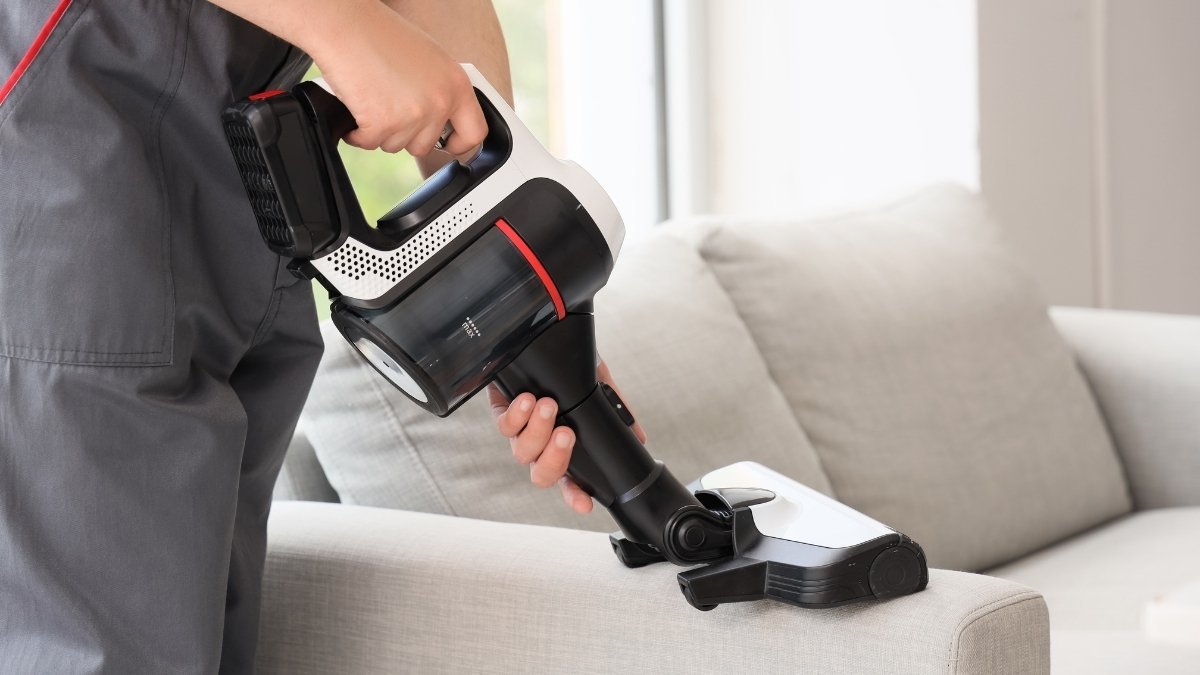
It’s 9:30 PM, you’re exhausted, and you glance at your wrist. Your fitness tracker glares back at you with a judgmental “6,200 steps.”
The guilt hits immediately. You failed. You didn’t hit the magical 10,000. So, maybe you do a few frantic laps around the kitchen island, or maybe you just sigh and promise to do better tomorrow.
But here’s the thing—and I want you to really hear this—that guilt is based on a marketing slogan, not biology.
For years, we’ve treated 10,000 steps like a binary switch: hit it and you’re healthy; miss it and you’re doomed. But the human body is way more nuanced than a pass/fail test. Emerging research suggests we need to stop looking at steps as a “goal” and start viewing them as a “Step Budget.” And the good news? The cost of entry for saving your life is a lot lower than you think.
Let’s dig into the real metabolic math.
The “10,000 Steps” Lie (And Where It Came From)

Honestly, this is one of the weirdest stories in fitness history. If you ask most people where the 10,000-step number came from, they assume it was a massive government study or a Harvard lab.
It wasn’t. It came from a clockmaker in Japan.
In the lead-up to the 1964 Tokyo Olympics, a company called Yamasa Toki created the world’s first wearable pedometer. They needed a catchy name. They settled on Manpo-kei.
- Man = 10,000
- Po = Steps
- Kei = Meter
Why 10,000? Because the Japanese character for 10,000 (万) looks kind of like a little stick figure walking.
That’s it. It was a vibe. It was a marketing aesthetic. As Dr. I-Min Lee from Harvard’s T.H. Chan School of Public Health has pointed out repeatedly, that number had a “limited scientific basis” when it launched.3 But it was “sticky.” It sounded perfect. And now, sixty years later, we have millions of people stressing out because they didn’t hit a number that a marketing team pulled out of thin air to sell gadgets.
The problem isn’t that 10,000 steps is bad—it’s a great number!—the problem is the psychological cost. When we think “10k or bust,” and we only manage 6,000, we feel like we’ve done nothing. But biologically? You’ve actually done the most important work already.
The “Active Couch Potato” Problem

Here is where the science gets a little scary, but stick with me.
For a long time, we thought exercise was like a bank deposit. If you went for a 45-minute run in the morning, you “deposited” fitness, so it didn’t matter if you sat in a chair for the next 10 hours.
Dr. Marc Hamilton, a pioneer in “inactivity physiology,” blew this idea up. He found that “too much sitting” is biologically different from “too little exercise”.
You can be fit and still be unhealthy. They call it the “Active Couch Potato” phenomenon. You crush your morning workout, but then you sit for 9 hours. During those 9 hours, your body enters a unique physiological state that actively promotes disease, and—here’s the kicker—the morning run doesn’t fully protect you from it.
The Vacuum Cleaner Effect (Lipoprotein Lipase)

To understand why, you have to meet my favorite enzyme: Lipoprotein Lipase (LPL).
Hamilton describes LPL as a “vacuum cleaner” for your bloodstream. It sits on the lining of your blood vessels and sucks up fat (triglycerides) to use as fuel.
- When you move: Even just puttering around or standing, your postural muscles (like the soleus in your calf) twitch. That twitching keeps the LPL vacuum plugged in and running.
- When you sit: The vacuum gets unplugged.
In animal studies, when muscles are inactive (like when you’re flopped in a chair), LPL activity plummets by 90% to 95%. And it happens fast—within hours.
This is the crucial part: A hard workout doesn’t “vaccinate” you against this. You can run five miles at 6 AM, but if you sit until 6 PM, your LPL vacuum is off that whole time, and fat is just camping out in your arteries.
The “Back Door” for Sugar (GLUT4)

There’s another player here: GLUT4. This is a protein that transports glucose (sugar) from your blood into your muscles. Usually, you need insulin to open the door for glucose.
But walking opens a “back door.”
When you walk, muscle contractions trigger a sensor called AMPK. This forces GLUT4 to the surface of the cell without needing insulin. This is a superpower. It means that even if you have insulin resistance, walking lowers your blood sugar mechanically.
The Takeaway: The “Step Budget” isn’t just about burning calories. It’s about keeping the vacuum running and the back door open.
The Real Numbers (The “Step Budget”)

Okay, so if 10,000 is arbitrary, what’s the real number?
Recent massive studies (we’re talking hundreds of thousands of people) have finally given us a tiered budget. Think of this like tax brackets, but for staying alive.
Tier 1: The Survival Budget (~2,500 – 4,000 Steps)

This is the most important data point in this entire article. The biggest drop in risk doesn’t happen between 8,000 and 10,000 steps. It happens between “couch” and “moving.”
A 2023 meta-analysis in the European Journal of Preventive Cardiology found something incredible:
| Outcome | The “Magic” Number Starts At… | What Happens? | Source |
| Heart Health | ~2,337 steps | Risk of dying from cardiovascular disease starts dropping. | 16 |
| Overall Survival | ~3,867 steps | Significant drop in risk of dying from any cause. | 16 |
Translation: If you are currently sedentary (under 3,000 steps), getting to 4,000 isn’t “failing” to hit 10k. It is statistically the most powerful thing you can do for your longevity. You are essentially doubling your protection against early death.
Tier 2: The Sweet Spot (7,000 – 8,000 Steps)

If you want to optimize—get the most bang for your buck—aim here.
- The Plateau: For adults over 60, the mortality benefits basically level off between 6,000 and 8,000 steps. Walking more than that is great for other things, but it won’t necessarily make you live longer.
- The Risk Drop: Hitting 7,000 steps is associated with a 50% to 70% lower risk of death compared to the low-step groups.
Tier 3: Diminishing Returns (10,000+ Steps)

Here’s the truth: The curve flattens. Going from 8,000 to 12,000 steps yields only a tiny sliver of extra protection against mortality.
Does that mean you shouldn’t do it? No! But view it as “extra credit.” Don’t view it as the passing grade.
The Twist (Why You Can’t Walk Off a Donut)

“I’ll just walk it off.” We’ve all said it. But evolutionary anthropologist Dr. Herman Pontzer threw a wrench in that logic.
Pontzer studied the Hadza tribe in Tanzania. These are hunter-gatherers. They are on their feet all day, walking 13,000 to 16,000 steps, hunting, digging, tracking.
You’d expect them to burn an insane amount of calories, right?
They don’t.
Pontzer found that when you adjust for body size, Hadza men and women burn the same number of calories per day as a sedentary office worker in the US.
Wait, how?
Pontzer calls it the “Constrained Energy Expenditure” model. The body is thrifty. When you are highly active, your body doesn’t just burn more and more energy. It starts stealing energy from other systems to keep the total budget flat. It turns down “housekeeping” functions like:
- Inflammation (Good!)
- Stress reactivity (Good!)
- Reproductive hormones (Neutral)
What this means for you:
- For Weight Loss: The Step Budget is kind of terrible for weight loss on its own. Your body will fight to keep the calories burned stable. You can’t outwalk a bad diet.
- For Health: This is actually amazing news. By walking a lot (7k-10k range), you force your body to become efficient. It stops spending energy on inflammation, which is exactly what prevents heart disease and autoimmune issues.
You aren’t walking to burn calories; you are walking to teach your body to stop being inflamed.
The “Hidden” Budget (NEAT)
So, how do you hit these numbers without spending 2 hours on a treadmill? You hack your NEAT (Non-Exercise Activity Thermogenesis).
NEAT is everything you do that isn’t sleeping, eating, or “working out.” It’s fidgeting, cooking, and walking to the mailbox. And it varies wildly between people—up to 2,000 calories a difference!.
If you are a “NEAT Responder,” your body naturally makes you pace when you overeat. If you aren’t, you sit still.
How to Hack It:
You have to engineer the movement.
- The FABS Protocol: “Frequent Activity Breaks from Sitting.” It’s not about duration; it’s about frequency. Breaking up sitting every 30 minutes with just 3 minutes of movement drops blood sugar significantly.
- The “Cadence” Bonus: Does speed matter? Sort of. Walking fast (>100 steps/minute) is a “bonus” for your heart, but for pure survival, volume wins. Just getting the steps in, even slowly, counts.
Need More Help Getting Your Steps In? Look Into These
I get it—knowing the science is one thing, but actually getting 7,000 steps when you’re glued to a Zoom call is another. Sometimes willpower isn’t enough, and you need to engineer your environment. If you want to make hitting your “Step Budget” automatic rather than a chore, here are a few tools I genuinely think can help you bridge the gap between “sedentary” and “survival.”
1. UREVO 2-in-1 Under Desk Treadmill

This is the ultimate hack for the “Active Couch Potato.” If you work from home, this slides right under your desk. You don’t need to run on it; just walking at a slow 1.5 mph while answering emails can get you 5,000 “free” steps before lunch. It’s quiet, compact, and helps keep that LPL vacuum running while you work.
2. VIVO Standing Desk Converter

If you aren’t ready to commit to a treadmill, simply standing is your first line of defense. This converter sits on top of your existing desk and lets you switch between sitting and standing in seconds. Remember, just standing engages your postural muscles and wakes up your metabolism.
3. 3DActive 3DFitBud Simple Step Counter

Not everyone wants a smartwatch buzzing at them or tracking their sleep. If you find high-tech trackers anxiety-inducing, this is for you. It does one thing: counts steps. No apps, no Bluetooth, no charging. Just clip it on and go. It’s perfect for focusing purely on the “budget” without the data overload.
4. ComfiLife Anti-Fatigue Floor Mat

Here is the secret nobody tells you about standing desks: your feet will hurt if you stand on a hard floor. A good anti-fatigue mat is non-negotiable. It adds a layer of cushion that reduces strain on your knees and back, making it much more likely that you’ll actually use your standing desk instead of ignoring it.
5. Aduro Sport Weighted Vest

If you are short on time and want to maximize the “Optimization” phase of your budget, a weighted vest is a game-changer. Wearing just 10-12 lbs while you walk the dog increases the metabolic demand and bone-loading benefits without the impact of running. It turns a casual stroll into a mild resistance workout.
Conclusion: Your New Target
Let’s rewrite the rules. Forget the “all-or-nothing” 10,000-step tyrant. Here is your new, science-backed Step Budget:
- The Rescue Budget (4,000 Steps): If you do nothing else, do this. This plugs the “vacuum cleaner” back in. It separates you from the highest-risk sedentary group.
- The Optimization Budget (7,500 Steps): This is the sweet spot. You’re getting almost all the longevity benefits available to a human being.
- The Timing Bonus: Take 1,000 of those steps immediately after dinner. You’ll use the GLUT4 back door to crush your blood sugar spike.
The goal isn’t to be an athlete. The goal is to be a functional human who refuses to let their metabolic machinery gather dust. So, look at your watch. If it says 4,500, don’t feel guilty. Feel protected. Then, maybe take a lap around the kitchen anyway—just to keep the vacuum running.





